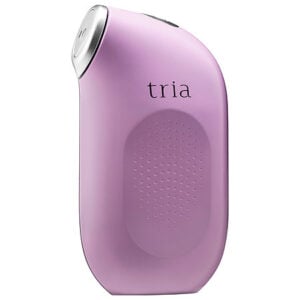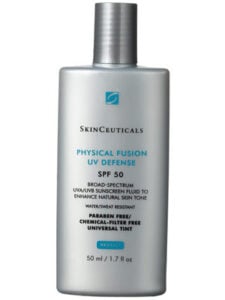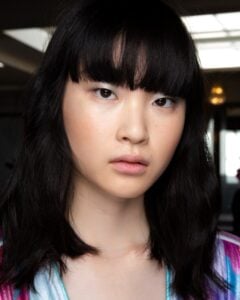You probably think that you’d like to reserve the act of sizzling for bacon and not your skin, but let’s be real – stranger things have happened (i.e. the joys of your twenties). Although the thought of voluntarily singeing your skin with a laser may sound a little crazy, laser treatments continue to gain in popularity, and for good reason – they actually work.
Research indicates that these treatments are an effective anti-aging method to ward off the hands of time, that not only result in the stimulated production of collagen but also visible improvements of wrinkles and sagging. Other benefits besides strengthened skin structure include the reduction of imperfections like brown spots, milia, scarring, skin tags, and pigment issues.
Fun fact: the word “laser” is actually an acronym for Light Amplification by Stimulated Emission of Radiation. In normal speak, the treatment works by concentrating a powerful stream of light ranging from 400 to 1300+ nanometers (nm), which is a measurement of light meaning a millionth of a meter. The light penetrates deep within the layers of the skin into the dermis (the structural portion of the skin with collagen and elastin fibers) in order to stimulate your body into repairing damage including wrinkles and sagging. One of the main differentiation points for this kind of treatment compared to others out there is that this procedure has the vital option of treating targeted areas of the skin.
THE DIFFERENCE BETWEEN ABLATIVE AND NON-ABLATIVE LASERS
There are two categories of laser treatments: Non-Ablative and Ablative. Each treatment offers a variety of different benefits:
Non-Ablative laser treatments are gentler and focus mainly on irregular skin pigmentation problems and uneven skin tone. This treatment leaves the top layers of the skin (the epidermis) intact while rejuvenating from within the deeper layers (the dermis).
The other option is Ablative laser treatment, which literally damages the epidermis in order to rejuvenate the deeper layers of the dermis, and is generally reserved for the more advanced treatment of fine lines, deep wrinkles, and sagging. Understandably, the thought of intentionally damaging the surface of your skin is terrifying, so it’s a good thing that laser technology has advanced a long way! There is a trend to using lower energy settings of lasers in order to minimize the scary side effects that include burns and scarring, while still producing effective results.
One of those advances is called Fractional Laser Resurfacing, which is an ablative and ever-popular laser treatment developed by Solta Medical in 2001. The method targets a fraction of the skin with the laser, producing thousands of deep microscopic columns in the skin that kind of look like mini polka dots while leaving the surrounding tissue alone. The portion that is left intact promotes rapid healing to the damaged area, allowing for reduced downtime.
NON-ABLATIVE LASERS
The lasers used for this non-invasive treatment will emit light usually between 400–1200nm wavelengths. This treatment is best for those looking for a gradual approach to rid skin of minor imperfections like brown spots and broken capillaries. Remember that, although this treatment can stimulate collagen synthesis to give you a more youthful look, don’t expect dramatic results. In other words, think of this as a way to “refresh” the visible signs of aging like a light to medium chemical peel.
THE TRUTH ABOUT IPL
Intense Pulsed Light (IPL) treatment sometimes goes by the name of photo-rejuvenation or photo-facials and is often confused with being a non-ablative laser. Although the treatment shares some similarities to lasers since they both use light to heat and destroy a targeted area of skin, IPL uses a broad spectrum of light that can be used against several skin conditions while lasers use a single wavelength of light to target a specific condition. Some of the things IPL treats include lightening skin discoloration (age spots and sun spots), scars, reducing redness and broken blood vessels. To a lesser extent, IPL is known to improve skin texture, fine lines/wrinkles as well as temporarily reduce oiliness.
Check out our guide if you’re interested in exploring more about the anti-aging benefits of IPL.
Learn more about types of facials and other facial treatments in our in-depth guide,
NON-ABLATIVE TREATMENTS
POPULAR BRANDS
Fontana SP Dynamis Laser, Laser Genesis by Cuter, Fraxel Dual 1550/1927
BEST FOR
- Fine wrinkles
- Slight scarring
- Skin discoloration
- Redness
- Rosacea
DOWNTIME
As with most non-ablative treatments, there is minimal downtime with a maximum of two days. Your face may be slightly red, but it would definitely be socially acceptable to appear in public the same day as your procedure.
NON-ABLATIVE LASER TREATMENT PROCESS
PRE-CARE & AFTERCARE
- Be sure your skin isn’t broken with breakouts, blemishes, or open wounds
- Arrive with clean, washed skin wearing no makeup
- Take Advil before the treatment if you have a low tolerance for pain
- For at least 7-10 days before and after treatment, avoid both chemical (salicylic acid/glycolic etc) and physical exfoliants, Retinol and Retin-A, and benzoyl peroxide
WHAT HAPPENS DURING A LASER TREATMENT?
Surprisingly, no topical anesthesia is needed for non-ablative treatments and patients often remark that they didn’t feel a thing during the procedure other than a slight tingle.
- To begin, the physician will place pads over your eyes to protect them from the laser treatment. These machines are quite compact, with handheld devices that are used in accordance with the size of the area being treated, causing the circumference of the laser light to vary as well.
- The physician will use a small tool to hold the target area in place, while the laser light pulses over the skin’s surface gradually to stimulate tissue and promote circulation, and to activate the tissues’ restorative functions. You may begin to feel slight thermal heat as the treatment continues. This heat is used to create a skin-resurfacing effect that helps to remove fine wrinkles while stimulating those deeper tissues for collagen renewal. The physician should ask you throughout the procedure about the temperature and your tolerance level so you always have control to avoid any pain.
- The laser is usually passed twice over the skin. The first pass gives a short stimulus to the skin, while the second pass penetrates somewhat deeper to ensure effectiveness. A cooling compressor or fan will be used throughout the treatment.
- Once the procedure is complete, there is no downtime. You can get up and go.
LENGTH OF PROCEDURE
45-90mins, depending on the area of the skin.
WHAT IT FEELS LIKE
When you receive non-ablative laser treatment, you will most likely feel cooling and heating sensations during treatments with minimal discomfort. This may range from a slight tingle to minimal burning.
HOW WILL YOU FEEL AFTER THE TREATMENT
You may have some redness on the treated areas for a few hours following treatment, which will fade.
POST-TREATMENT RECOVERY
There is usually little to no downtime.
HOW MANY TREATMENT SESSIONS ARE NEEDED
3-6+ sessions spaced 3-4 weeks apart.
RESULTS
Your skin begins to feel tighter during and after the treatment, leading to recovery time. This will lead to continual improvement in results that can even continue to occur up to six months after treatment, while collagen production continues to be stimulated.
Results fade between 1-2 years depending on the power of the laser used, lifestyle and skincare regime, so it might be time to check in with your doctor for some maintenance.
BENEFITS
Research shows that non-ablative lasers have demonstrated results such as:
- Clearer, even skin complexion (Around Week 1)
- Minimized minor wrinkles and fine lines (Around Week 1–2)
- Stimulated collagen production (after repeated treatments) to fill in wrinkles, and youthful plumpness to the complexion (Around Week 2-4)
- Improved skin coloration and removal of brown spots (Around Week 2-4)
- Continuous improvement of the skin’s appearance for up to 4 months after treatment
COMMON SIDE EFFECTS
Since non-ablative treatments have little to no downtime, the risk of side effects is greatly reduced. Some possible side effects include infection, possible changes in skin color, mild redness or swelling, and blisters or scars.
AT-HOME NON-ABLATIVE LASER DEVICE RECOMMENDATIONS
As the leading non-ablative at-home laser on the market, Tria treatments are gentle yet effective. With basic settings and a simple daily routine, these at-home anti-aging devices offer visible results. The main difference between professional treatment and an at-home treatment is that you won’t be achieving results as fast or as dramatic so make sure to keep your expectations in check.
FOR THE WHOLE FACE
 Tria Age Defying Laser ($495)
Tria Age Defying Laser ($495)
- Reduction in fine lines and wrinkles
- Collagen regeneration
- Comfort of at-home treatment
- Specific treatment facial zones indicated in instructions (cheeks, forehead, chin, and upper lip)
- Various treatment levels (1 to 3) depending on the damage of the area being treated.
Participants who used the laser in a clinical study for the brand reported a number of visible improvements. After 4 weeks they saw:
– 76% saw a reduction in fine lines and wrinkles
– 87% saw a more youthful and radiant complexion
– 95% saw smoother skin
– 92% said it works better than any cream or serum
FOCUS ON THE EYES
 Tria Age-Defying Eye Wrinkle Correcting Laser ($249)
Tria Age-Defying Eye Wrinkle Correcting Laser ($249)
- Correcting fine lines and wrinkles around the eyes
- Eye-opening results
- Gentle treatment for delicate areas
AT HOME LASER TREATMENT PROCESS
PRE-PROCEDURE
- Be sure your skin isn’t broken with blemishes, breakouts, or open wounds
- Wash skin with a gentle cleanser like CeraVe Hydrating Cleanser ($7.96)
PROCEDURE
This at-home treatment is very simple and easy to use:
- Turn device on and treat the specified area (either the treatment zones or eye area)
- Use for 2–10 minutes, depending on instructions for the targeted area
- Follow treatment with hydrating serum (or sunscreen if you are going outside)
LENGTH OF PROCEDURE
2-10 mins
WHAT IT FEELS LIKE
When using this at-home treatment, you will most likely feel warming sensations during treatment with minimal to no discomfort.
HOW WILL YOU FEEL AFTER THE TREATMENT
This at-home treatment boasts little to no redness after treatment, with minimal skin sensitivity.
RECOVERY TIME
There usually is no downtime.
HOW MANY TREATMENTS ARE NEEDED
5-7 treatments per week (depending on the targeted area) over a 12-week period.
RESULTS/BENEFITS
After 2 weeks of treatment, you should start to see visible results with smoother skin, followed by a very noticeable reduction in discoloration, fine lines and wrinkles after 8 weeks. It is recommended to take a 4-week break to allow collagen reproduction to take place. Once this period is over, you can use the treatment in 8-week increments to maintain results.
COMMON SIDE EFFECTS
Many users say that during and immediately after treatment, a slight sunburn sensation is felt. This tingling or slight burning will subside within a few minutes or hours after treatment.
ABLATIVE LASERS
Ablative lasers usually emit 1320nm or more and often rely on the technological advance of fractionation (discussed earlier) in order to provide maximum results while minimizing the recovery time it takes for skin regeneration compared to traditional lasers. This laser treatment is more intense than non-ablative as it targets both the surface (epidermis) and the lower layers of skin (dermis) by damaging (or “ablating”) the surface of skin.
The two most common ablative procedures are Erbium lasers and CO2 lasers, a more intense procedure that produces much more dramatic results as well a much longer downtime. Speaking of downtime, when considering an ablative laser treatment, make sure you have the ability to take a few days off for recovery.
ERBIUM LASERS (ER: YAG)
Er: YAG (to remove the surface of the skin) lasers have a wavelength of 1064-2940nm and are extremely precise. The water in the skin cells absorbs the energy of the laser which allows the tissue to be vaporized. By causing the treated skin to shrink, new collagen is stimulated in the dermis, resulting in smoother and tighter skin. They are usually less invasive the CO2 lasers and safer for darker skin-tones.
POPULAR BRANDS
Naturalase LTE, Harmony Pixel Laser
BEST FOR
- Fine lines and wrinkles
- Sunspots
- Skin Resurfacing
- Acne/surgical scars
- Collagen renewal
CARBON DIOXIDE LASERS
This method is an intense ablative laser treatment with a carbon dioxide (CO2) laser that has a wavelength of 9400–10600nm for skin resurfacing, resulting in the removal of damaged skin with youthful results. These treatments create a dramatic difference in your skincare with just one treatment by combining the fractional method with CO2 for quickened results but extended recovery.
POPULAR BRANDS
UltraPulse CO2 Laser, CO2RE, Fraxel Repair, Matrix, Pixel
BEST FOR
- Severe skin damage
- Visible signs of aging
- Deep wrinkles and discoloration
- Scar treatment
- Millea
- Skin tags
ABLATIVE LASER TREATMENT PROCESS
PRE-CARE & AFTER-CARE
- Meet with your physician or dermatologist before your procedure to ensure your skin is in good shape and to discuss pain relief options (a mild sedative or anesthetic may be used during the procedure, so it’s important to discuss this in advance).
- Be sure your skin isn’t broken with blemishes, breakouts, or open wounds
- Arrive with clean, washed skin wearing no makeup
- Set-up a ride home. After the procedure, you may still be woozy from the pain reliever, so you will want someone to help you arrive home safely.
- For at least 7-10 days before and after treatment, avoid both chemical (salicylic acid/glycolic etc) and physical exfoliants, Retinol and Retin-A, and benzoyl peroxide
PROCEDURE
A mild sedative or anesthetic will be administered to you at the beginning of (or during) treatment. Since ablative laser treatments penetrate the surface layer of the skin, the pain factor is increased. Depending on your skin type and treatment option, your physician will consult with you about pain reduction during the procedure.
- Your face will be cleaned and your eyes will be covered to shield them from the laser light.
- The pain reduction treatment you discussed with your physician will be given, usually ranging from a topical anesthetic to an oral one depending on the severity of the treatment.
- A larger handheld device will go over the surface of the skin with an intense beam of light energy targeting one specific section repeatedly. This damages the epidermis to heat the dermis underneath, reaching and stimulating collagen fibers.
- Many clinics will provide ice or a cold compress for any extreme heat felt during the procedure if needed.
- Your physician will then cover your face with a soothing ointment to assist with the pain and healing process. You will also receive an ointment, ice packs, and over-the-counter pain relievers to use throughout your recovery period.
TREATMENT TIME
30 mins–2 hours
HOW DOES TREATMENT FEEL
When you receive this treatment, you will most likely feel a burning, tingling sensation. Many describe this as a severe sunburn discomfort concentrated in one area and can be quite itchy and painful. This may be slightly discomforting at first but is tolerable for the short amount of time needed for the treatment.
RECOVERY
After the treatment, you may continue to feel a sunburn-like sensation. Redness and some discomfort may be felt after ablative laser procedures, and recovery time can range from about 5- 7 days for less intense treatments (Erbium Lasers) and 7-14 days for more advanced treatments (CO2 Lasers), depending on each individual.
As the skin starts to heal itself over the first few days after treatment, slight scabbing or peeling can occur as the pure new layer of skin begins to surface. For best results, it’s advised to wait until your skin’s surface has fully recovered before having another treatment. Remember if you do opt for an ablative laser treatment, it might be good to take a few days off to avoid shocking your coworkers (even the old “bad sunburn” routine probably won’t come off believable without severe levels of side-eye).
HOW MANY TREATMENTS ARE NEEDED?
As an estimate, usually, 1-2 treatments are needed with C02 Lasers, although again this depends on the intensity settings of the lasers. With Erbium lasers, it can range anywhere from 1-5 treatments again depending on the intensity of the laser.
In terms of preventative anti-aging (first signs) we recommend going with lower intensity lasers, with less downtime and more treatments. Once you have achieved your desired results, many suggest a revisit to your doctor after about 2-3 years, especially for fine lines, to see if another set of treatments is needed.
RESULTS/BENEFITS
With such a thorough treatment, there are many benefits to having an ablative laser treatment:
- Heating creates collagen and elastin production for a smoother, tighter appearance (starting from one week, continuing improvement up to 6 months)
- Overall youthful glow and fresh complexion (starting from one week, continuing improvement up to 6 months)
- Noticeable difference in the appearance of deep wrinkles around the eyes with crows feet, the mouth with laugh lines, and severe forehead wrinkles (up to one month to notice results)
- Faded skin discoloration caused by impurities over time, creating a clear canvas (takes up to one month to notice results)
- Rejuvenated appearance of your skin by removing severe sun damage and allowing the epidermis to heal itself (up to 6 months for optimal results)
COMMON SIDE EFFECTS
With the ablative laser treatment coming with a longer recovery time, there are some possible side effects. This could include swelling, scabbing, prolonged redness, oozing, scarring, acne flareups, or infection. Since this procedure is a bit more intense than non-ablative laser treatments, we recommend staying in close touch with your dermatologist and clinic before and during treatment to monitor the results.
RECOMMENDED AFTERCARE PRODUCTS
After a laser treatment, it’s important to invest in some good products in order to help your skin recover fast without complications.
Look into a gentle cleanser like Cetaphil ($18.79), a moisturizer like Aquaphor ($13.55), and of course a good sunscreen that provides broad-spectrum protection.
Skinceuticals Physical Fusion UV Defense ($25.46)
The gentle and fragrance-free formula combines the mineral-based sun protection agents Titanium Dioxide and Zinc Oxide in order to provide maximum anti-aging protection. Not only does the texture work well under makeup, but the dreaded white cast that comes along with many physical (mineral-based) sunscreens is minimized through a universal tint that suits a variety of skin tones.
If you’re interested in some other effective sunscreen options as well as learning more about how to properly protect yourself from the sun’s aging rays, read our in-depth guide about how to pick a good sunscreen.
FINAL THOUGHTS
Depending on the type lasers can be an extremely aggressive anti-aging treatment so make sure to do your research and ask any and all questions to the skin-care practitioner you’ll be working with. Make sure to you’ll be working with. Like all anti-aging treatments, lasting results are dependent on your lifestyle habits as well as using effective skin-care products. Keep in mind that at the end of the day the goal is to look good, not forever 25.




